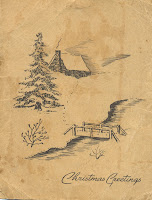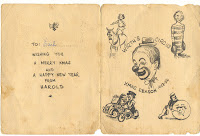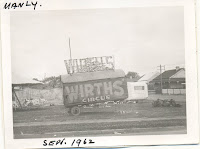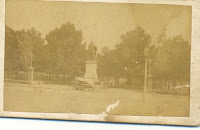Minstrel shows were very popular in Australia in the mid to late 19th century. The tradition of end man and bones was incorporated into variety halls in Australia, and for many years, the Tivoli theatre chain had a minstrel style first part in every programme.
Why I am talking about minstrels? Well, whilst looking in my files last night, I discovered two music sheets.
The first is from Christy's minstrels and is probably an English sheet.

The song is , Smile your sweetest smile again, sung by Ernest Bruce of the original Christy's Minstrels, St James's Hall.
The second appears to be from Australia.

This is The Cuckoos Notes, sung by Mr Rawlinson of the original Christy's Minstrels. It was printed in England but sold at Palings in Sydney, according to an embossed stamp on the left hand side. Of interest is the fact that it has a signature, J Rawlinson, on the bottom left hand side.
Now according to Professor Waterhouse, a Christy's minstrel troupe toured Australia in the late 1860s. I wonder if this music sheet dates from then?
One famous graduate from an American minstrel group which toured later than Christy's was Irving Sayles. An article about Irving is here
Minstrelsy is a fascinating area of Australian theatre history. If you have an interest in it, Professor Waterhouse's book is the best place to start.
-Leann










 The Criterion was demolished in 1935 so that Park Street could be widened. Basically they demolished the theatre and kept the pub! Here is the pub as it appeared today.
The Criterion was demolished in 1935 so that Park Street could be widened. Basically they demolished the theatre and kept the pub! Here is the pub as it appeared today.






